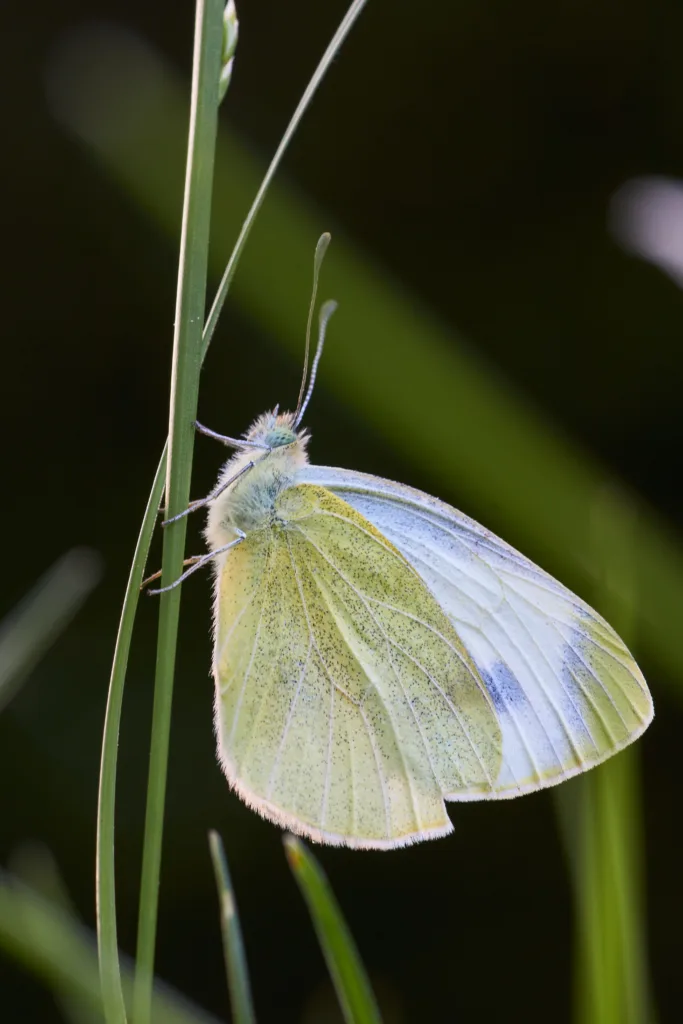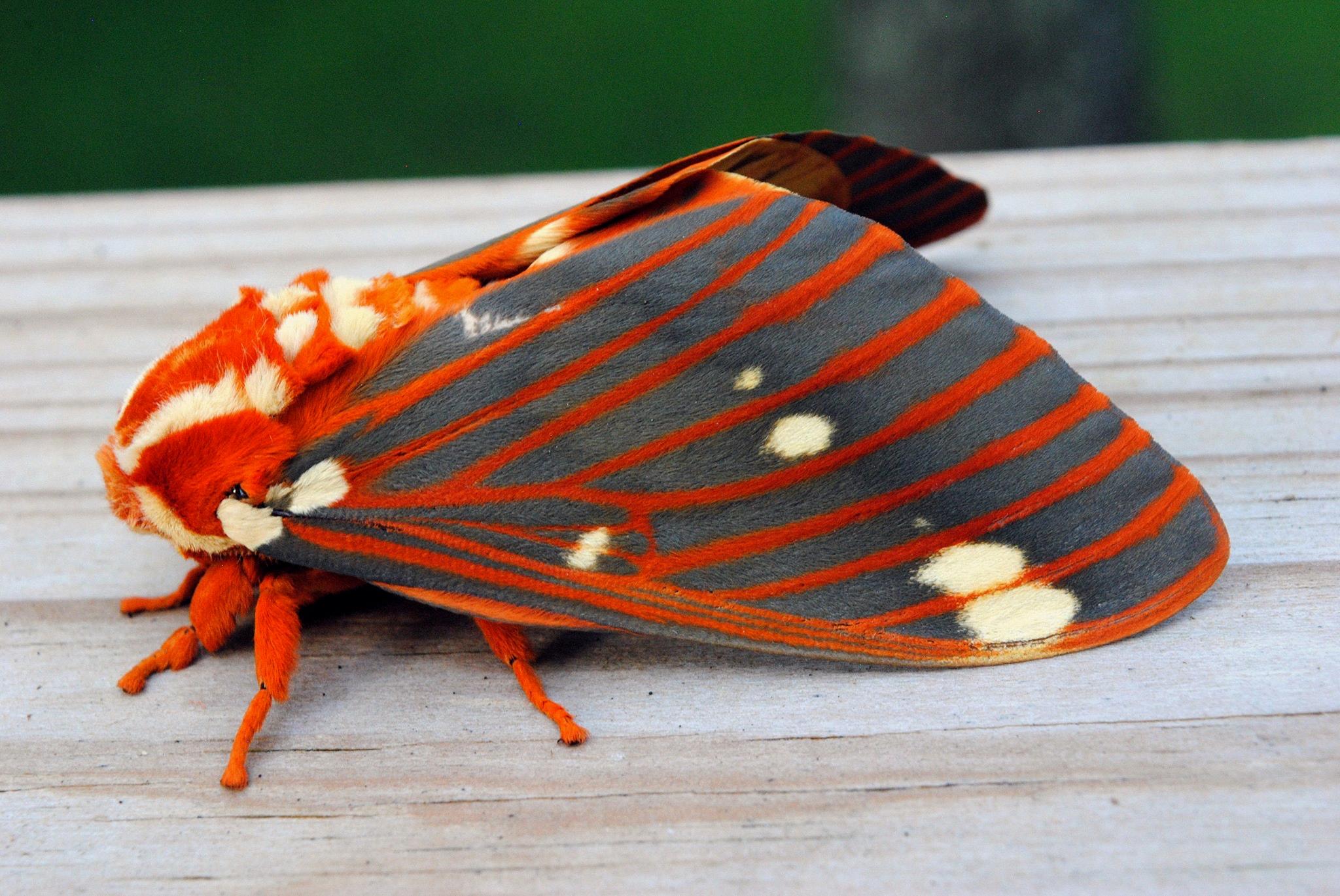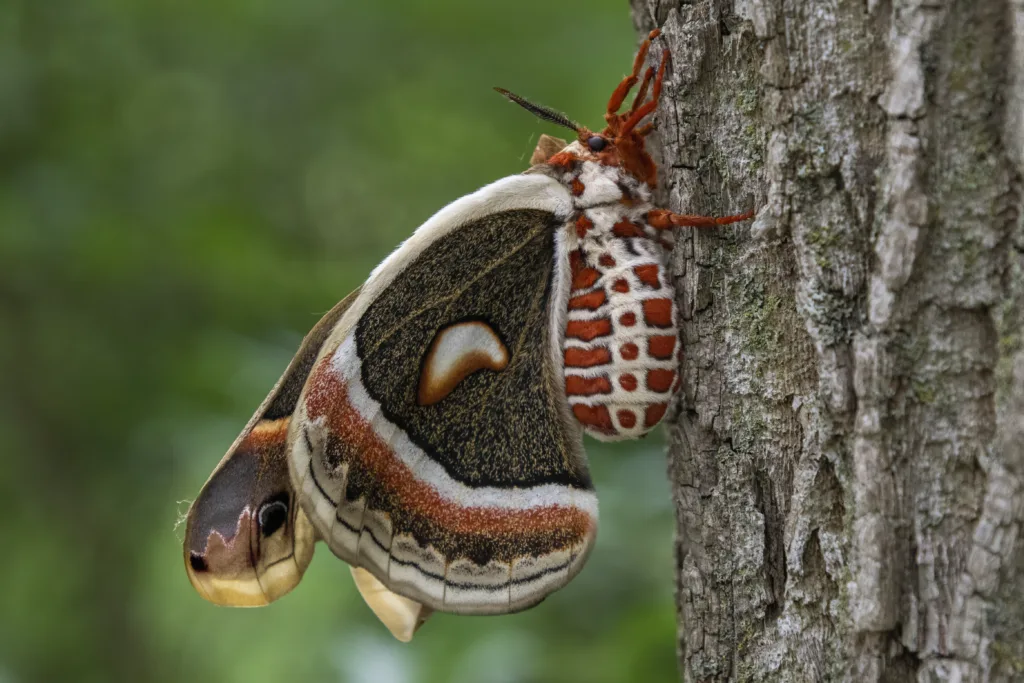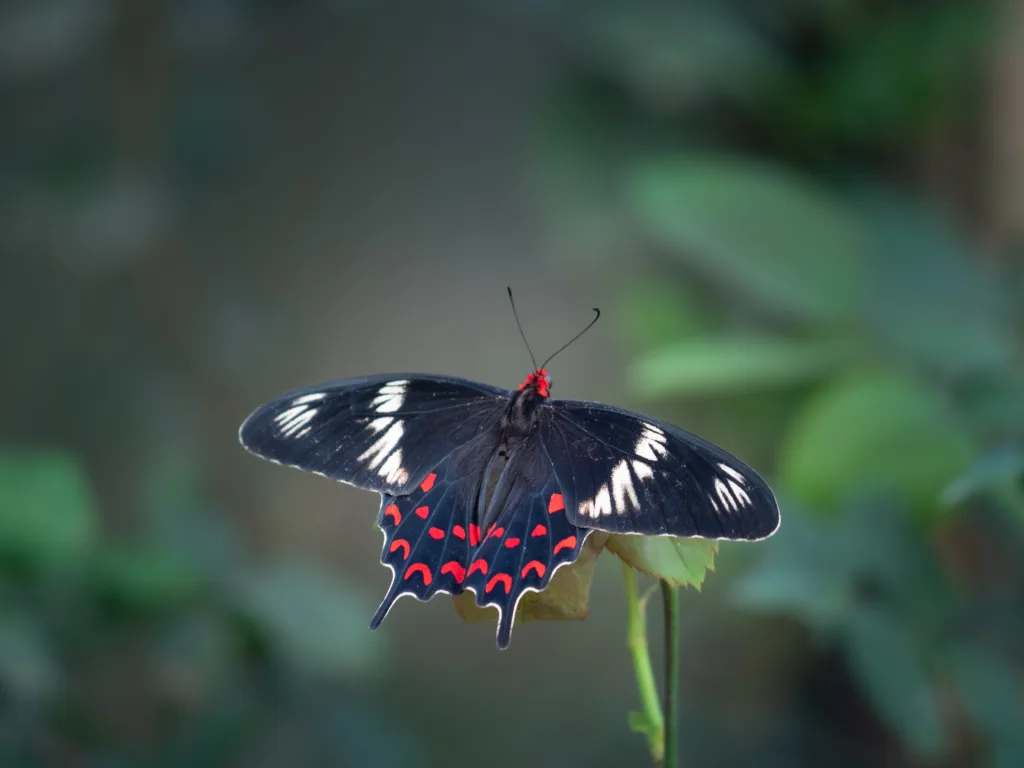Have you ever wondered if moths have mouths? It’s a common question that many people ask, and the answer is not as straightforward as you might think.
First of all, let’s start with the basics. Moths are insects that belong to the order Lepidoptera. They go through a life-cycle that includes four stages: egg, caterpillar, pupa, and adult. During the caterpillar stage, moths have special jaws, called mandibles, that they use to chew holes in clothes, blankets, and carpets made from natural fibers like wool, felt, silk, and fur.
But what about when they become adults? Do moths have mouths then? The answer is yes and no. Some moths do have mouths, while others do not.
The moths that do have mouths typically have long, extendable, curled straw-like sucking mouthparts. These mouthparts are called proboscis and are used to sip nectar from flowers. Moths that have proboscis feed on the nectar of flowers and other sweet liquids. They can also use their proboscis to drink water and other fluids.
On the other hand, some moths do not have mouths at all. These moths, such as the Luna, Polyphemus, Atlas, Promethea, Cecropia, and other large moths, live off the food stores from when they were a caterpillar. They only live a short time as an adult, roughly a week for some species. During this time, they do not eat anthing at all. Instead, they must live on the energy they stored as caterpillars.
So, to summarize, some moths have mouths with proboscis that they use to feed on nectar and other liquids, while others do not have mouths at all and must rely on the energy stored during their caterpillar stage.
The presence or absence of a mouth in moths depends on the species. While some have proboscis and can feed on nectar and other liquids, others do not have mouths and must live on their stored energy. Either way, moths are fascinating creatures that play an important role in our ecosystem.
The Possibility of a Moth With a Mouth
Yes, most moths have a mouth, although some species do not have functional mouthparts as adults. The mouthparts of moths are usually long and extendable, allowing them to reach the nectar of flowers or other food sources. Some species of moths also feed on fruit or tree sap, and their mouthparts are adapted to these diets. However, there are some species of moths that do not feed as adults and rely on the energy reserves they built up as caterpillars. In conclusion, while not all moths have functional mouths, the majority of species do possess mouthparts for feeding.

The Absence of Mouths in Moths
Moths, such as Luna, Polyphemus, Atlas, Promethea, cecropia, and oher large species, do not have mouths as adults due to their unique life cycle and feeding habits. As caterpillars, these moths consume large amounts of food to store energy for their transformation into adults. During this metamorphosis, the moths undergo significant changes, including the development of wings, reproductive organs, and the ability to fly.
Once they emerge from their cocoon or pupa, adult moths no longer need to eat as they rely on the energy reserves they accumulated as caterpillars. Additionally, the lifespan of adult moths is relatively short, with some species living for only about a week. Therefore, they do not require mouthparts to feed and instead focus on mating and reproducing during their short adult life.
In summary, moths do not have mouths as adults due to their reliance on stored energy from their caterpillar stage and their short lifespan as adults.
How Do Moths Consume Food Without Mouths?
Moths do have mouths, but they don’t eat in the same way that humans or oter animals do. Adult moths have a long, tube-like structure called a proboscis which they use to suck up nectar from flowers. This proboscis is coiled up when not in use, but when a moth finds a flower with nectar, it uncoils the proboscis and dips it into the flower to extract the sweet liquid.
However, the larvae of moths (called caterpillars) have a completely different feeding mechanism. They have special jaws called mandibles which they use to chew holes in clothes, blankets, and carpets made from natural fibers like wool, felt, silk, and fur. The caterpillars then consume the fibers of the material as their primary source of nutrition. So, while adult moths may feed on nectar, the larvae of moths have a specialized mouthpart and feeding strategy to consume natural fibers.
Living Without a Mouth: How Do Moths Survive?
Moths are insects that undergo a complete metamorphosis cycle, which means they transform from an egg to a larva (caterpillar), then to a pupa, and finally to an adult moth. During their larval stage, moths eat voraciously to store energy in their bodies for their adult life. Once they emerge as adults, they don’t have functional mouthparts, which means they cannt feed on anything. Instead, they rely on the energy they stored as caterpillars to survive during their short adult lifespan. They use this energy to fly, mate, and lay eggs for the next generation. In summary, moths can live without a mouth because they store energy during their larval stage, which they use to sustain themselves as adults.
Can Moths Bite Humans?
No, moths cannot bite you. The vast majority of adult moths do not have mouths and therefore are incapable of biting anything, including humans. Moths primarily feed on nectar and othr liquids, using a proboscis to extract the fluids. However, it’s worth noting that moths begin their life cycle as larvae called caterpillars, which can bite or sting in some cases. These bites are usually not harmful to humans, but some caterpillars, such as the puss caterpillar, can cause a painful sting. Therefore, while adult moths are harmless to humans, it’s important to be cautious around caterpillars and to avoid touching them if possible.

Source: indiananature.net
Why You Should Not Touch a Moth
You should avoid touching moths because their wings are covered in tiny scales that help them fly. When these scales are rubbed off, it can interfere with their ability to fly or thermoregulate. The oils and salts on our skin can also damage the delicate wings of moths, making them more susceptible to predators and other dangers. Additionally, some species of moths have defensive mechanisms, such as toxic chemicals, that can be harmful to humans if touched or ingested. Therefore, it is recommended to observe moths from a distance and avoid touching them to ensure their safety and well-being.
Does a Moth Experience Pain?
The ability of moths to feel pain is still a topic of debate among researchers. Some studies suggest that moths have a nervous system capable of detecting and responding to noxious stimuli, indicating that they may be able to experience pain. However, other studies argue that moths lack the necessary brain structures to process pain in the same way as humans and other animals. While it is not yet clear whether moths can truly feel pain, it is generally agreed upon that they are capable of sensing and reacting to potentially harmful stimuli in their environment.
Do Moths Have Brains?
Yes, moths have brains. Moths, like all insects, have a central nervous system that includes a brain. While the size of a moth’s brain is small, it is nonetheless complex and capable of processing sensory information, controlling movement, and regulating physiological functions. In fact, the study of moth brains has provided valuable insights into the neural mechanisms of smell and other sensory processes. The primary smell center of the moth brain, known as the antennal lobe, is one of the most extensively studied areas of the insect brain.

The Purpose of Moths
Yes, moths do have a purpose in the ecosystem. They play a crucial role in the food web, serving as a vital food source for many predators such as birds, mammals, and other insects. Moths are also important pollinators, particularly those that are active at night when other pollinating animals are not active. In addition, moths help to break down dead plant material, contributing to nutrient cycling in the environment. Furthermore, some species of moths are used in scientific research and oters have cultural significance in various parts of the world. Overall, moths are an essential part of the ecosystem and have various important functions.
The Impact of Touch on Moths
Moths are delicate creatures and touching them can potentially harm their wings. While it may not necessarily cause physical pain, the removal of scales or damage to their wings can affect their ability to fly and survive in their natural habitat. Therefore, it is generally advisable to avoid touching moths if possible to protect their well-being.
Survival of a Moth Without Flight Ability
Moths rely on their ability to fly to search for food, find mates, and avoid predators. If a moth is unable to fly due to injury or deformity, its chances of survival in the wild are greatly reduced.
Without the ability to fly, the moth may struggle to find food and water, and may be more vulnerable to predators. It may also have difficulty finding a suitable mate for reproduction, which is crucial for the survival of the species.
However, if the moth is kept in captivity or provided with a safe and comfortable environment, it may be able to survive for some time. Moths can still crawl and walk, and may be able to find food and water in their immediate surroundings.
It’s important to note that even healthy, fully functioning moths have a relatively short lifespan, oten only living for a few weeks or months. Therefore, the lifespan of a moth that can’t fly may be even shorter.
Overall, while it is possible for a moth to survive without the ability to fly, its chances of survival in the wild are greatly reduced.
The Lifespan of Moths
No, moths do not only live for 24 hours. While some species of moths have a very short lifespan of only a few days or weeks, there are many other species that live for several months. The lifespan of a moth depends on several factors including the species, habitat, and climate. For example, some moths that hibernate through the winter can live for several months, whereas others that do not hibernate may only live for a few days. It is important to note that even though some moths may have a short lifespan, they still play a crucial role in the ecosystem as pollinators and food sources for other animals.

Are Moths Colorblind?
No, moths are not color blind. They have three opsins that allow them to see colors in the ultraviolet, blue, and green range. This means that they have a limited color vision compared to humans, who have three opsins for red, green, and blue, allowing us to see a wider range of colors. However, some species of butterflies have even more opsins and photoreceptor cells, giving them an even more complex and sophisticated color vision system than moths.
Conclusion
In conclusion, moths do have mouths, but not all of them use them. While some moths, like the Luna and Polyphemus, do not have mouth parts and rely solely on their stored energy from when they were caterpillars, most moths have long straw-like mouth parts that they use to suck nectar from flowers. However, it’s important to note that not all moths feed on nectar as adults. Some species, like clothes moths, never eat anythig as adults and rely on the food stores they accumulated as caterpillars. Ultimately, while moths may not be known for their eating habits, they do have mouths, and their feeding habits vary greatly depending on the species.
